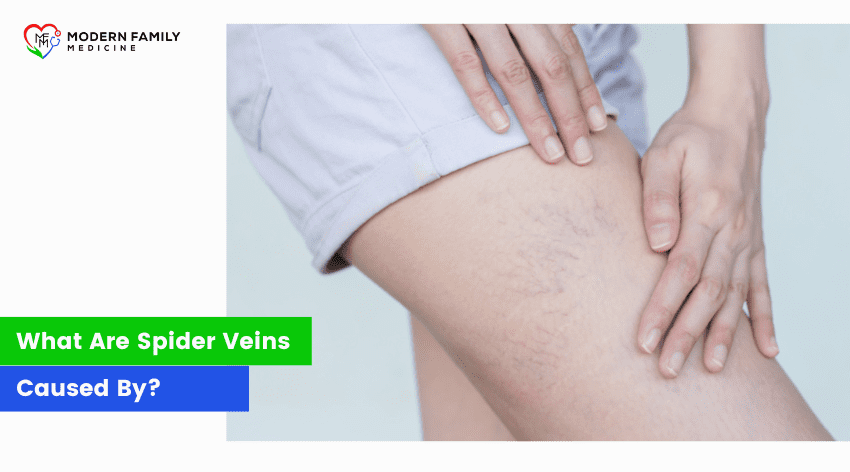



Spider veins are more than just a cosmetic annoyance. They are a widespread condition affecting an estimated 88% of women and 79% of men, with prevalence increasing in individuals between 30 to 50 years of age. This blog will help you learn and understand what spider veins are, what causes them, and how they can be effectively treated. Whether you're noticing the first signs or have been managing this condition for a while, you'll find actionable insights and solutions here.
Spider veins are small, damaged veins that can appear on the surface of the legs or face. They are easily recognizable by their web-like branching pattern and can be red, purple, or blue. Although spider veins are generally not painful or harmful, they can be an aesthetic concern for many people.
Here are the causes and risk factors associated with spider veins:
Genetics plays a significant role in the development of spider veins. If your parents or grandparents had spider veins, you are also more likely to develop them.
Changes in hormones due to puberty, pregnancy, and menopause can contribute to the development of spider veins. Hormonal medications, including birth control pills and hormone replacement therapy, can also increase the risk.
During pregnancy, the volume of blood in the body increases, which can cause veins to enlarge. The expanding uterus also puts pressure on the veins, worsening the condition. However, spider veins resulting from pregnancy often improve without medical treatment after childbirth.
As you age, the valves in your veins may weaken and not work as well. This malfunction can cause blood to pool in your veins, enlarging them.
Being in the same position for extended periods forces your veins to work harder to pump blood to your heart, which can contribute to forming spider veins.
Excess weight puts additional pressure on your veins, which can lead to spider veins.
For fair-skinned individuals, excessive sun exposure can cause spider veins, particularly on the face.
Understanding these causes and risk factors can help manage and potentially prevent the development of spider veins. If you are concerned about spider veins, consult a healthcare provider specializing in vascular issues or dermatology for guidance and treatment options.
Fortunately, several effective treatments can help reduce or eliminate spider veins. These include:
Are you ready to take action against spider veins with a proven treatment for reducing their appearance. We specialize in this effective procedure to remove spider veins at Modern Family Medicine. Our team is dedicated to providing personalized care to ensure the best results for our patients. Don't let these veins keep you from feeling and looking your best. Schedule your consultation today and take the first step towards vein-free legs.
Each patient's journey towards clearer skin is unique. With today’s advancements in medical aesthetics, spider veins no longer have to be a permanent part of your life. Contact us to get our specialized treatments of laser spider vein removal in Duluth, GA, which can rejuvenate your skin and boost your confidence.
Source: Medical News Today, National Library of Medicine
Also Read: Which Is Better: PRP or Hair Transplant?